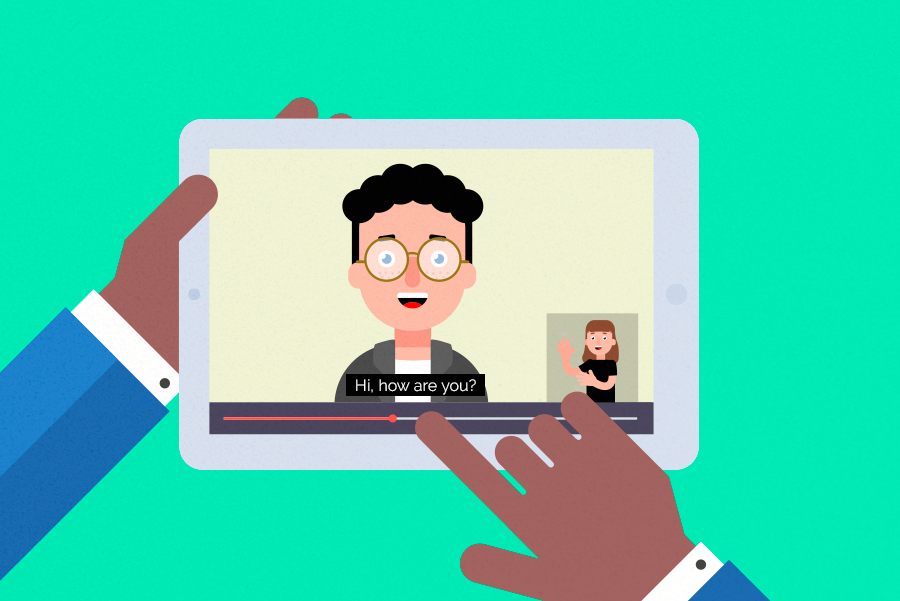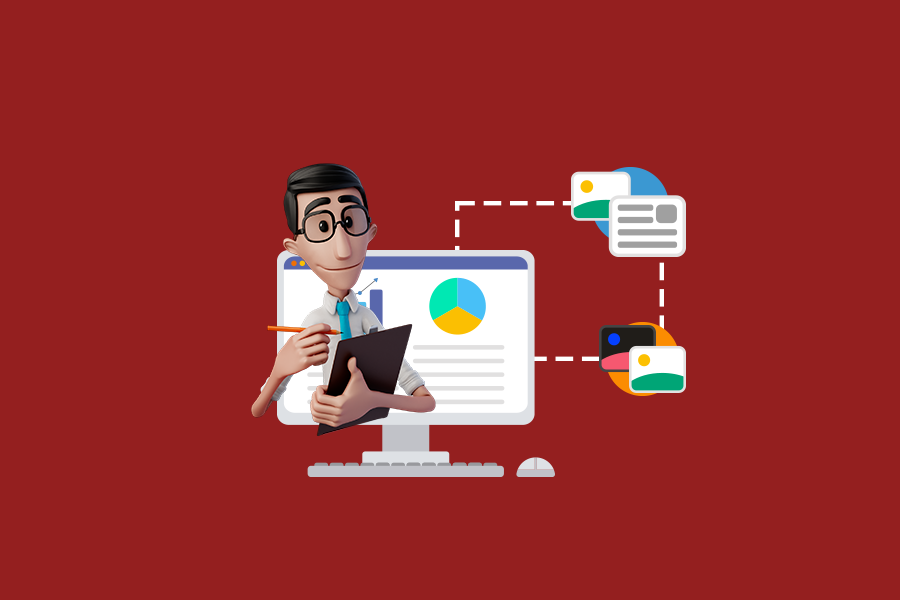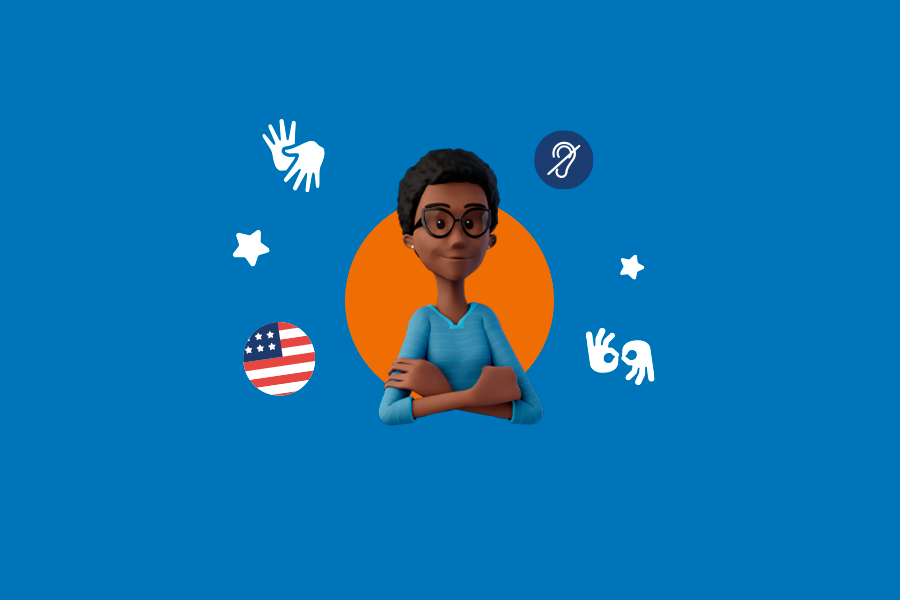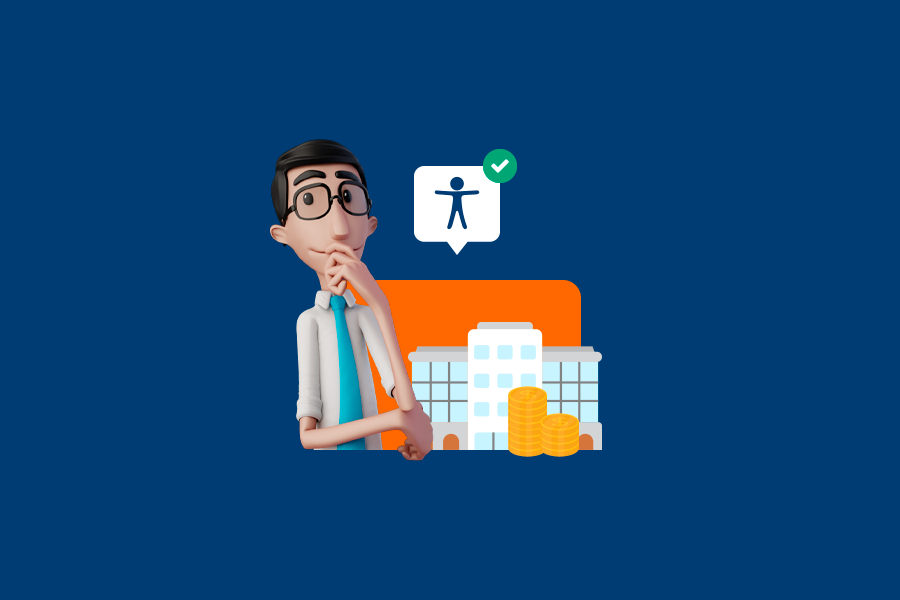
What is accessibility for deaf people and what is its importance?

To better understand the importance of accessibility for the deaf, we first need to talk about the deafness context:
About 11.5 million Americans have some sort of hearing impairment, which represents 3.5% of the population. According to the World Federation of the Deaf (WFD), 80% of deaf people in the world are illiterate in written languages and many of them communicate through Sign Language.
But in a world made by hearing people for hearing people, how can we overcome the barriers that are consequently built for the deaf people? Well, that is where accessibility comes in!
What is accessibility for deaf people?
“Assistive technologies” is a term used to refer to accessibility tools that make everyday life easier for people with disabilities. The goal of accessibility for the deaf is to promote more autonomy and freedom so that they can be included in society in a fair and equitable way.
For example, to ensure accessibility for deaf people to watch videos, it is necessary to include subtitles and a Sign Language interpreter, so they can receive the information that is being transmitted by audio. Only counting on subtitles does not make the video 100% accessible, because it is necessary to consider the diversity within the deaf community itself, since not all people who are part of it are literate in English and prefer using ASL. In the same way, some of them do not communicate in ASL (American Sign Language) and rather using subtitles.
Therefore, accessibility for the deaf must be thought of broadly, covering their entire community. Respecting their culture and individuality.
What is ADA Compliance?
There are more than 40 million people with disabilities in the United States. In 1990, the Americans with Disabilities Act (ADA) was signed into law by George Bush. Its purpose is prohibiting discrimination against these people and ensuring inclusion, both in physical and online environments.
ADA compliance applies to every organization: large, medium, and small business. And, of course, if you think inclusion is important, know that ADA compliance is also your duty!
How important is accessibility for Deaf Signers?
Deaf or hard-of-hearing people who communicate through Sign Language are known as “signers”. Many of them have great difficulty with written languages and, therefore, communication in ASL provides freedom and autonomy in their daily lives.
With accessibility in ASL, they can receive in their mother language all the information that is being transmitted in English. This is essential to ensure their inclusion in society, in schools and universities, in the labor market, in your client list, etc.
Without accessibility for deaf signers, these people will struggle to perform important functions of daily life, such as: participating in business meetings, shopping on the Internet, following important news, and even studying.
What are the accessibility resources for the deaf?
Deaf and hard-of-hearing people are not all the same and do not always communicate in the same way, or in the same language. For example, other than deaf signers there are also the ones that are Oral Deaf. These are people who are literate in English and can lip-read and prefer to speak.
Therefore, it is important to take this into consideration when thinking about accessibility resources for them. Check out some of the main ones:
Subtitles in videos
Subtitles in videos are a feature that helps everyone, not just people with disabilities. But they are essential when talking about deaf people receiving the information that is being transmitted by audio.
Sign Language Interpreter
A Sign Language interpreter is an essential solution to ensure the accessibility of deaf and hard-of-hearing people,. These are professionals qualified to translate the messages being transmitted by voice into ASL. They should be present in videos of any kind, electoral campaigns, movies, events, lectures, musical shows, etc.
Hand Talk App: virtual translator from English to ASL
Hand Talk App is an accessibility solution that, with the help of the friendly virtual translators Hugo and Maya, translates texts and audio from English to ASL (American Sign Language). It also works as a pocket dictionary and has educational videos for those who want to start learning the language.
Why are subtitles not enough for the deaf?
Deaf or hard-of-hearing people who communicate with ASL are often not fluent in written languages, so subtitles do not provide the necessary accessibility for them. The correct option is to have a Sign Language Interpreter to translate the videos.
Videos with resources for hearing-impaired people
We may not realize it, but videos are already an integral part of our daily lives. We watch videos on our smartphones, on TV, on the computer, in the movies… It is hard to go at least one day without having consumed this kind of content, even if it is Instagram Stories.
And why not take the power of online videos to make them accessible to deaf people? If fighting for accessibility in movies and TV stations is harder, we can start with ourselves, since we can all be content creators in the virtual world.
Video is an even more effective tool for communicating with deaf people than text, as it can combine subtitles, ASL translation, and the context of the images themselves, which also allows lip-reading. Not to mention that deaf people are very visual.
Why produce videos accessible for deaf people?
We can answer this question with one simple word: citizenship. It is our duty to promote the inclusion, and not the discrimination, of any group in our society. But we can also turn to legislation. Even though we still don’t have any specific law for accessibility in audiovisual content in general, there are others that reinforce the importance of this issue.
How do I make my video accessible to the deaf?
To make your video accessible to the deaf, two elements are fundamental: subtitles and translation into ASL. Both can be done through editing. Some video platforms also perform automatic translation from the audio, such as YouTube, but this option is rather glitch-prone. Even during live online broadcasts, it is also possible to insert these features. For this, you will need to use an encoder. This is software that connects the camera and microphone signals to the server of the live streaming platform to make the live broadcast. You can control what is being displayed on the broadcast screen directly from this software by switching cameras, displaying slides, and even inserting subtitles and a small window for ASL translation.
Start Investing in Accessibility for the Deaf people
As a society, we need to think more and more about making the spaces we are part of more accessible for all people. This goes from our group of friends to our work enviroment. Accessibility is inclusion! You can start today to compile the tips we have given in this post and put them into practice to contribute to a fairer and more inclusive world!


